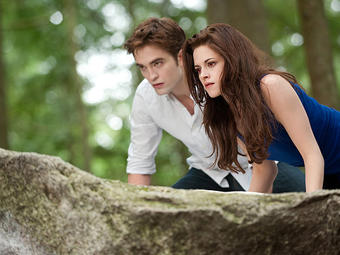
Section Branding
Header Content
Twilight Breaking Dawn Writing Prompts and Other Lessons
Primary Content

I admit it. I’m a Twi-hard! I’ve read all of the Twilight books. I’ve seen all of the movie adaptations and have a date with a group of Twilight loving female friends to see Breaking Dawn Part 2 this weekend. Go Team Edward!
Whether you are a fan of the series or not, you have to admit that the books have motivated students to read, particularly readers who don’t like to. There are many ways that teachers are using the books and the movies to their advantage in the classroom. I did some Googling and found some creative lesson plans and activities for you to try out. (And when you are done, check out this post on how one teacher is using the Hunger Games - another popular teen series in the classroom.)
1.) Twilight Breaking Dawn Video Writing Prompts for K-12: Using a clip from the first Breaking Dawn movie, each grade level is given a writing prompt to respond to. For example, young learners are nudged to create party invitations since the clip features a birthday party. Meanwhile high school students are encouraged to compare the book to the film.
2.) Looking for the Byronic Hero Using Twilight’s Edward Cullen for Grades 9-12: “In this lesson, students access their own knowledge of characters from a variety of texts to make comparisons between the familiar concepts of hero and villain and the new concept of the Byronic hero, a term coined from Lord Byron and his writings in the 19th century. They first list heroes and villains with which they are familiar and discuss any examples that may blur the lines between the two. Using Stephenie Meyer's Twilight and the character Edward Cullen, students identify the characteristics of the Byronic hero in a Venn diagram and diagram other characters with these traits. Students then choose a project—an expository essay, photo collage, or book cover—to extend their understanding of this complex and compelling character type.”
3.) Twilight Movie Discussion Guide: This two page guide was created to facilitate discussions after viewing the first Twilight movie. The suggested questions don’t simply cover the usual book vs. movie conversations, but focus on social issues like what constitutes a healthy relationship based on the book’s example and history - what is vampire myth and legend.
4.) Teaching Character Analysis Using Body Biographies: New York teacher Addie Albano introduces this intriguing concept to help problem readers: Body Biographies. They are “a visual and written representation of a character’s life. In creating a body biography, students practice character analysis, understanding literary devices, and determining author’s purpose.” Albano used a cardboard cutout of Edward Cullen from the Twilight series as the example. You can use other characters as well. Read more on how it’s done.
5.) Twilight Unit Study: Homeschooler Kris Bales has created this unit study to introduce a myriad of topics including character education, science (wolves, bears and mountain lions), fine arts and Native American studies (the Quileutestribe.)
How are you using the Twilight books or other popular novels in your classroom? Let us know!





